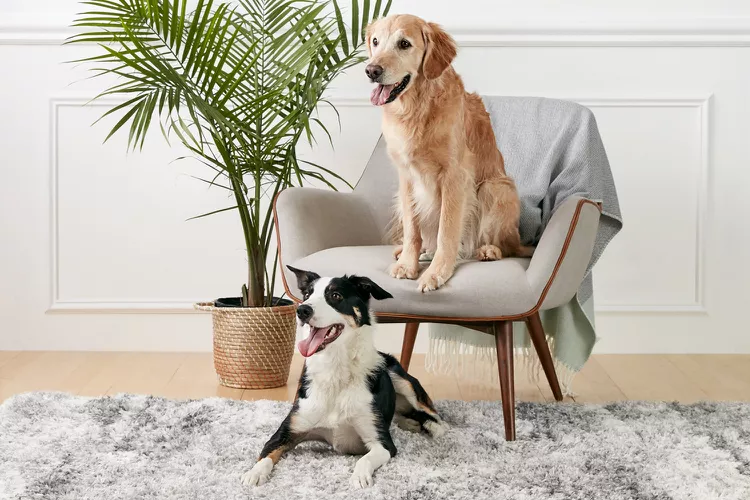How to Train Your Dog to Live With Another Dog

When you add a second dog to your household, it's important to start things off right and allow it to be properly introduced to your current dog. It may take several weeks for the two dogs to get used to each other, so patience is required.
But most of the time, dogs are accepting of other dogs, often welcoming the companionship. It's just a matter of an owner setting expectations and being consistent.
Start on Neutral Territory
The first few times your current dog meets and interacts with the new dog, it's best to be on neutral territory. This works best if you have the help of another person, but you can still do it alone.
Take the dogs (separately) to a neutral place like the park. Make sure there are no other dogs around, as this will be distracting. Allow the dogs to meet each other through a barrier if possible, like a fence. Avoid having them on-leash, as pulling on the leash can increase anxiety and even feelings of aggression.
Keep these interactions light and positive. This means you should stay calm, relaxed, and upbeat. Reward the dogs for being relaxed and upbeat. Watch body language closely. If you notice signs of anxiety or over-excited behavior, the session is over. If the dogs remain calm, you can eventually allow them to meet without the barrier. Just remember to separate them at the first sign of tension. Also, make sure play does not get too intense, as this can quickly switch to fighting.
Keep Dogs Separated (At First)
When the two dogs are in your home, it is important that they are kept separated until they have become acclimated to one another. The dogs should have crates or rooms that keep them from seeing one another. They should be fed in separate areas. Each dog should get adequate attention from you away from the other dog. This includes training sessions, which should be frequent.
As the dogs become more used to each other in their neutral territory meetings, you can allow them to see more of one another in your home. This is a good time to put up baby gates. Reward each dog for calm, relaxed behavior around the other dog.
Supervise All Interactions
You may never be able to trust these two dogs alone together, and that's OK. Though many dogs can eventually be left alone together, you should not let this happen for a long time (at least the first few months).
Once you get to the point where the dogs are ready to interact freely in your home, be sure you are there to supervise. Observe the chemistry and body language, separating the dogs if you have any doubts. Always do your best to remain calm and upbeat.
Make sure there are plenty of toys to go around but remove those toys if they become the source of tension between the dogs.
You can eventually feed the dogs in the same room as long as they do not begin to fight over food. That's a sign that they're not quite ready to fully accept each other.
Be Patient
No two dogs will have the same relationship. Your current dog and your new dog could become best friends within a few days. Or, they might simply learn to live with one another after many, many months. Chances are, your dogs will fall somewhere in the middle.
The situation can be a bit like sibling rivalry. If things are not going well, it doesn't mean it never will. Just take it back a step and be patient.
Problems and Proofing Behavior
Remember that a dog's sense of smell is how it learns about the world. If after a few weeks your dogs aren't getting along, it might be time to switch up your tactics and use that canine sense of smell.
Let the new dog out of its crate or room, and allow it to explore all the rooms of its new home. Teach it the boundaries you have in place (for instance, if dogs aren't allowed on the sofa), but otherwise let the new dog get his scent all over the place.
Then switch things up, and let the current dog out of its enclosure (while putting the new dog back in its enclosure). The current dog will explore the new scent, and eventually, after several encounters like this, won't be as freaked out by a new dog's scent.
Once the current dog seems comfortable with the new dog's scent, it's time for that meeting at a neutral location.